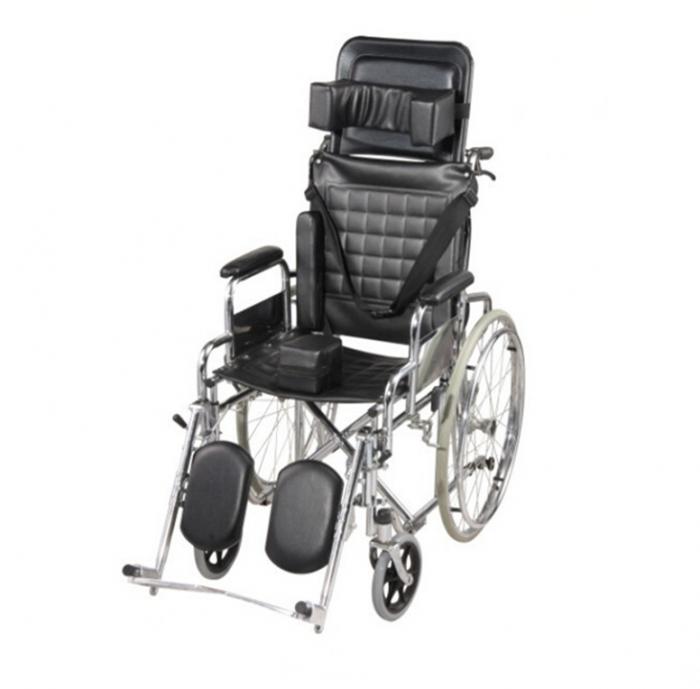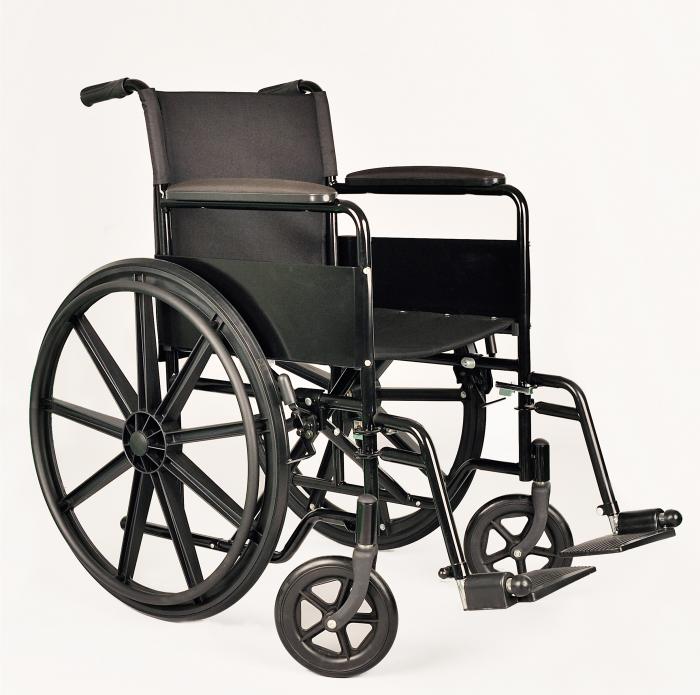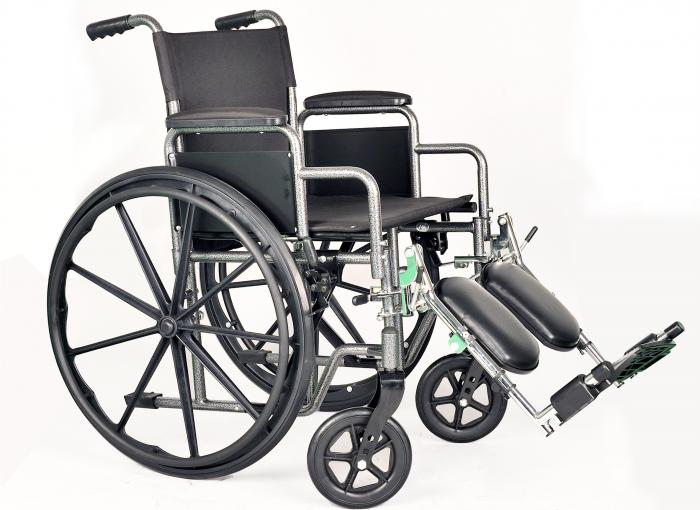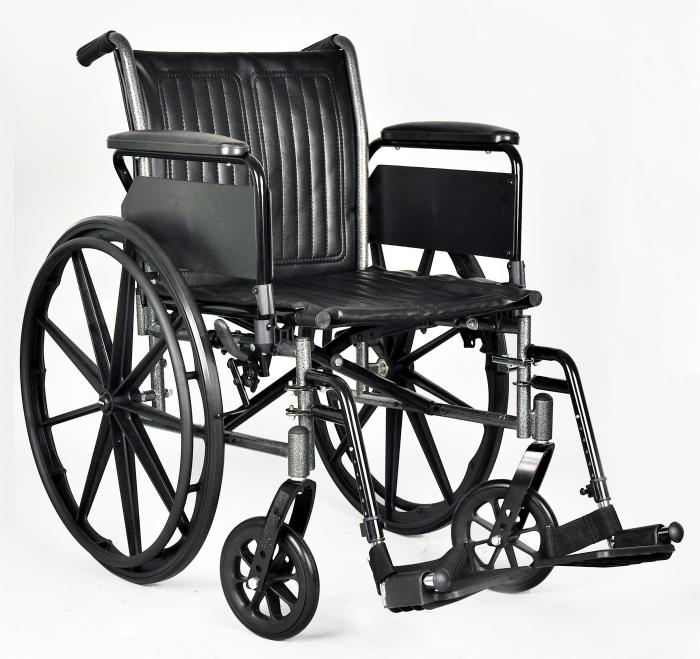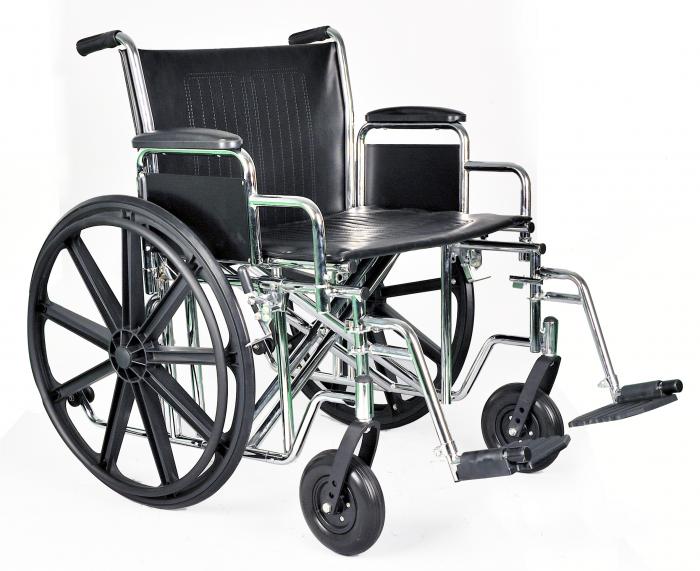| Name: | Reclining Wheelchairs |
|---|---|
| Model No.: | BES-WL036 |
| Product Name: | Reclining Wheelchair |
| MOQ: | 50 units |
| Price: | US115/pc |
| LEAD TIME: | 25 days |
| Weight Capacity: | 110 kgs |
| Certificates: | CE,UKCA,FSC |
| Brand: | BESCO |
| Sample: | Available |
| Weight Capacity: | 110 kgs |
| Keywords: | Reclining Wheelchairs,Recliner,Wheelchairs |
| Country of Origin: | China |
| Port: | Guangzhou,China |
Products Description
Chrome-plated Reclining Wheelchair with Leg Support Pad
Features:
Detachable armrest
Elevating footrest
Solid castor
Solid rear wheel
Reclinning high back
| Model No. | Seat width | Load capacity | N.W | G.W | Dimension | Packing |
| BES-WL036 | 46cm | 100kgs | 24 | 27 | 109*28*75 | 1pc/cn |
Reclining wheelchairs are specialized mobility devices designed to allow users to recline their upper body while seated. This feature provides comfort and support for individuals with specific medical needs.
Key Features:
Reclining Mechanism: Users can adjust the backrest angle, often using a lever or remote control.
Pressure Relief: Helps reduce pressure on the skin, which is beneficial for individuals at risk of pressure sores.
Postural Support: Assists users who require additional support for their head, neck, or back.
Customization: Many models offer adjustable footrests and headrests for personalized comfort.
Types:
Manual Reclining Wheelchairs: Require the user or an assistant to adjust the recline.
Power Reclining Wheelchairs: Feature electric controls for easy adjustment.
Considerations:
Weight Capacity: Check the wheelchair's weight limit to ensure safety and durability.
Portability: Some models are designed to be lightweight and foldable for easier transport.
Accessories: Options may include cushions, trays, and storage solutions for added convenience.
Reclining wheelchairs are particularly beneficial for individuals with limited mobility, spinal cord injuries, or conditions that require frequent position changes.
A reclining wheelchair is a type of wheelchair with an adjustable backrest that can be tilted backward from a nearly upright position to a more horizontal, lying-down position. This functionality allows users with limited mobility or health conditions to change their posture for comfort, to reduce pressure, and to support circulation without transferring out of the chair. Unlike a tilt-in-space wheelchair, which tilts the entire seat and backrest as a unit, a reclining wheelchair adjusts only the backrest, changing the user's body posture.
Key Features and Benefits
Adjustable Backrest:
The primary feature is the ability to recline the backrest to a desired angle, from a standard seated position to a position similar to lying on one's back.
Improved Comfort:
It provides greater comfort by allowing the user to shift positions, especially for those who find it uncomfortable or impossible to maintain a fully upright seated posture.
Pressure Redistribution:
The reclined position can help redistribute pressure on the body, which is crucial for reducing the risk of skin breakdown and improving circulation.
Postural Support:
It is beneficial for individuals who need assistance with postural stability due to conditions like spasticity.
Convenience:
It allows for position changes without the need for the user to be transferred out of the wheelchair, making transfers more convenient.
Who It's For
Reclining wheelchairs are ideal for:
Individuals with injuries, illnesses, or disabilities that limit their ability to maintain an upright position.
People with chronic conditions.
Patients recovering from surgery.
Those who need assistance with postural management and support for head, neck, and trunk control. f their back brace.
To use a reclining wheelchair, first engage both wheel locks for safety, then adjust the footrest to the proper height and support the patient's legs. Next, activate the recline mechanism using the levers, typically on both sides of the backrest, and allow the patient to lean back. To return to an upright position, the user or caregiver should pull the levers again and use body weight to raise the backrest, ensuring the occupant's body mass stays centered over the chair.
Before You Start
Secure the Wheelchair: Engage both wheel locks completely before starting to recline.
Ensure Proper Positioning: Make sure the patient's legs are supported by the leg rests and their body is positioned correctly for comfort and stability.
Adjusting the Leg Rests
Activate the Leg Rests: On the side of the chair, locate the lever or actuator.
Adjust the Height: Pull the lever to raise the leg rests to a comfortable height, supporting the patient's thighs and heels. The leg rests will lock automatically.
Return to Upright: To lower the leg rests, use the lever again, but it's crucial to support the patient's leg or remove it from the rest while lowering to prevent uncontrolled descent.
Reclining the Chair
Locate the Recline Levers: Find the release levers, typically on both sides of the backrest.
Initiate Recline: Depress both levers simultaneously.
Lean Back Gently: Slowly lean back, using body weight, to move the chair into the desired reclined position. The chair has infinite positions, so you can stop at any comfortable point.
Stop in Position: Release the levers to secure the backrest at the chosen angle.
Returning to an Upright Position
Engage Levers Again: Press both recline levers.
Raise the Backrest: Use body weight to lift the backrest from its reclined position to a more upright angle.
Secure Upright Position: Release the levers once the desired position is reached.
Important Considerations
Safety: Anti-tippers, if present, should be engaged for added safety during recline.
Body Mechanics: Keep the occupant's body mass centered over the chair's footprint to maintain stability.
Skin Care: For chairs with a basic reclining mechanism, monitor the patient for sliding and potential skin shearing. If this is a significant concern, consider a tilt-in-space wheelchair instead.
Model Variations: Always refer to the specific model's instructions, as mechanisms and features can vary between manufacturers.
